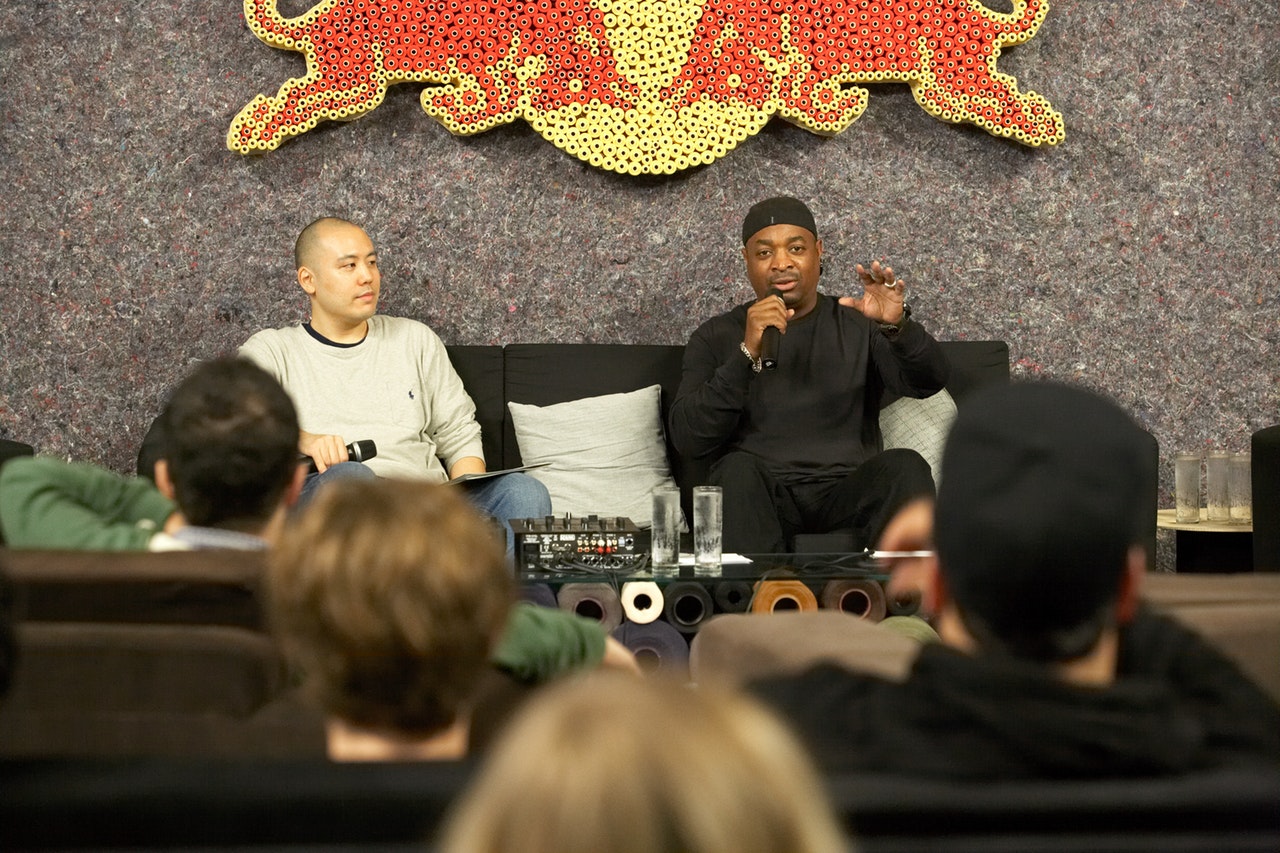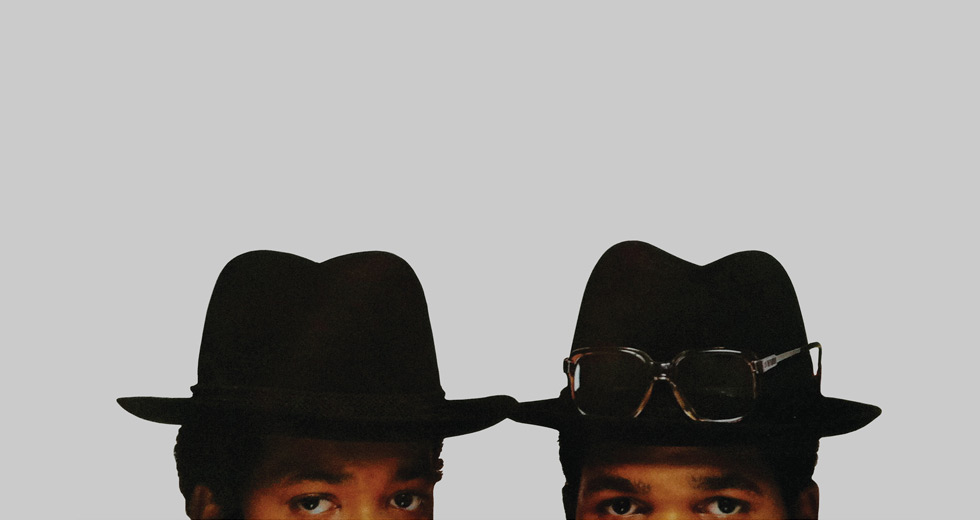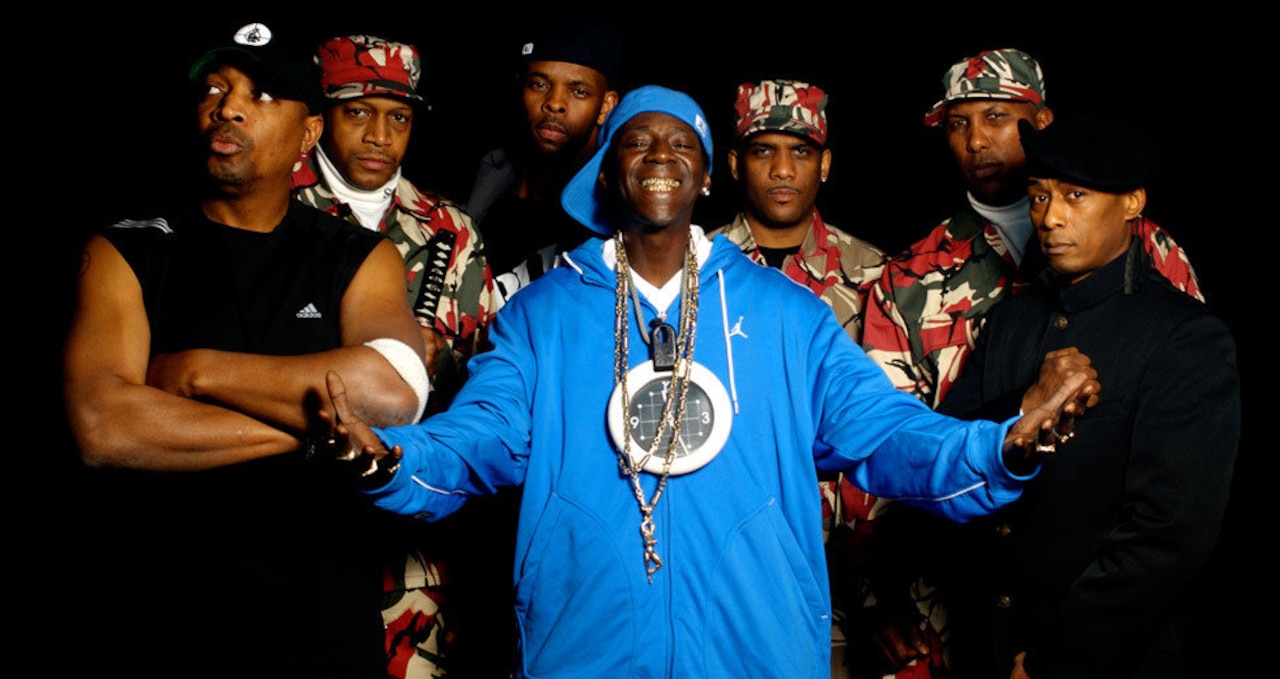
Public Enemy at Rikers: An Oral History
For a generation raised on Carrie and the girls, luxury condos and cabs that have no problem taking you to Brooklyn, it’s difficult to comprehend what New York was like in the ’80s. It was, as the song went, “like a jungle,” with blocks upon blocks of burnt-out buildings and a crumbling infrastructure. At the same time, the city was a hub of creativity, a place still cheap enough to support an underground art and music scene that would eventually become mainstream. With the rise of hip hop culture, those most brutalized by the advent of crack cocaine and the city’s general decay found an outlet that ended up doing nothing less than changing the world.
These days, when rappers own stakes in fortified water and basketball teams, hawk mascara or kick it with POTUS and FLOTUS, it’s worth remembering that in the ’80s, hip hop, while fun, was often a delivery system for activism. As cultural critic and radio host Jay Smooth puts it, “If you were a rapper you had no choice but to be oppositional because they weren’t going to let you become the man. Striving to be righteous is what made you be cool.”
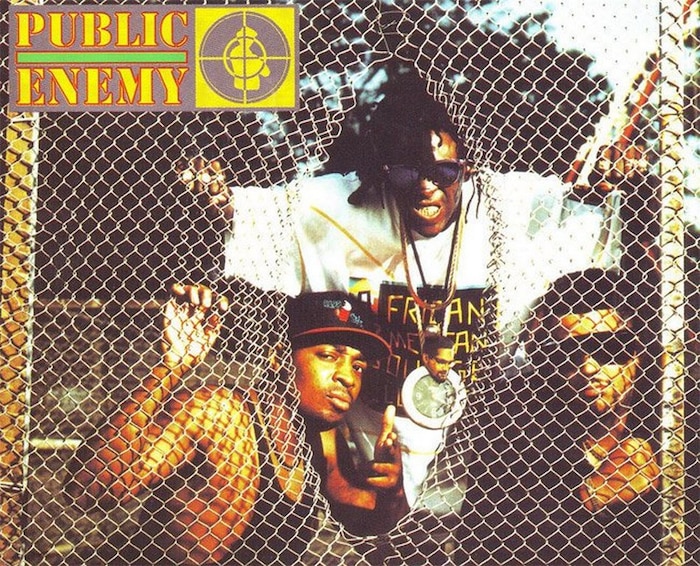
If a level of righteousness was an indicator of cool, then Public Enemy were Frank and Sammy chilling in Vegas. Formed in Long Island, New York, in 1982, PE (Chuck D, Flavor Flav, Professor Griff and DJ Terminator X) traded in agit-prop hip hop that was as provocative as it was commercially viable, the latter a surprise since PE were unapologetic followers of the Nation of Islam’s controversial – and some argued anti-Semitic – Louis Farrakhan.
PE’s sound was in your face. On such classics as Yo! Bum Rush the Show, It Takes a Nation of Millions to Hold Us Back and Fear of a Black Planet, PE’s in-house producers The Bomb Squad combined funk, soul and rock dynamics into an assaulting, groundbreaking sound that to this day remains vital and influential – so much so that Public Enemy became the fourth hip hop act to be inducted into the Rock and Roll Hall of Fame. Twenty-five years ago, getting a high five from the music industry was probably the last thing on PE’s crowded agenda.
[The writer] said, “You have a band coming to perform that advocates prison riots, how do you feel about that?” Rikers freaked out.
On August 12, 1988, Public Enemy became the first rap group to perform at Rikers Island, a minimum-security jail located in the East River between Queens and the Bronx. Rikers was, and remains, no stranger to hip hop; former prisoners have included Slick Rick, Lil Wayne and Ol’ Dirty Bastard. But this time, a group of young black men were entering and leaving Rikers on their own clock.
Lindsey Williams came up with the idea for the show. The then 22-year-old Def Jam executive was putting together a marketing plan for the group’s sophomore album, It Takes a Nation of Millions to Hold Us Back. PE was on Run-DMC’s Tougher Than Leather tour, and Williams, who was traveling with the group, proposed that they visit and perform at prisons in selected cities.
Lindsey Williams
Chuck had a lot to say to these young men that were incarcerated. I thought that he could uplift them and PE had a little buzz.
Bill Stephney (Def Jam/Public Enemy co-producer)
The intention from the beginning was to send Chuck, Flavor and Griff everywhere, preaching the gospel [of] “can we get along” – politics and social justice can make things better. As the group started to grow in political and social stature, I think all of these opportunities began to develop organically.

Chuck D
My expectations were to go inside a facility and be able to do concerts like Johnny Cash did at Folsom. But for us it was just a different dynamic. One of the things that we wanted was [to] reach the population inside. That signified what It Takes a Nation of Millions was about. In 1988 the number of black men in prison was on the rise with the influx of guns and drugs into the community. We wanted to address that.
Lindsey Williams
We’re talking about uplifting black people. You’re going to a prison where there are people who are going to possibly do 10 to 20 years, or who strayed the wrong way and [PE] are actually talking to them: “I’m going to reach out to you. Take a hold of my music. Take a hold to what I’m doing.”
Bill Stephney
[Ed] Koch was mayor. That’s another piece of what was going on in that period. So Public Enemy became the soundtrack for what was going on.
Jay Smooth
It was a really stark landscape, with a lot of tension and anger that people wanted to release.
After getting the green light, Williams reached out to publicist Leyla Turkkan to find prisons that synced up with PE’s itinerary and for help with coordinating media coverage. It wasn’t a hard sell. PE had street and critical credibility, and It Takes a Nation of Millions was nearing platinum.
Leyla Turkkan
Oh my god, the press were loving it. Couldn’t get enough. Anyone who went had an opportunity for something that no one else would get.
David Hinckley (pop music critic, New York Daily News)
Editors thought it sounded kind of exotic. They were intrigued by the novelty.
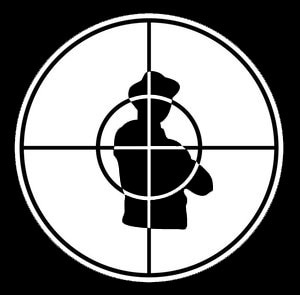
Planning the show took just over a week; the paperwork was expedited by a tangential relationship between members of PE’s camp and the Rikers staff. Turkkan arranged for two buses to transport 150 members of the press from midtown Manhattan to Rikers, but unbeknownst to all involved, the show was in jeopardy. According to Turkkan, a journalist had contacted the jail’s warden and special program coordinator to inquire why Rikers had granted permission for the show.
Leyla Turkkan
The writer asked if [Rikers] knew that PE had a song called “Black Steel in the Hour of Chaos.” And [the officials] said, “We don’t even know what you’re talking about. We just know that there’s a band called Public Enemy and people seem excited.” The writer told them that the song is about a prison riot. He said, “You have a band coming to perform that advocates prison riots, how do you feel about that?” Rikers freaked out and said, “We’re calling this thing off, are you out of your mind? We’re not having a band doing a song about prison riots!” Lindsey and I had to do backflips and promise that PE wouldn’t play “Black Steel.” Of course, Chuck and Griff loved it. “They don’t want us to play ‘Black Steel’? That’s the point, isn’t it? To go to Rikers and play ‘Black Steel.’” I promised that we wouldn’t play the song. Rikers said, “Fine, but they can’t play any radical songs.”
Lindsey Williams
Rikers was concerned and didn’t want the group to make any comments about the warden.
Chuck D
“Black Steel” was also one of the most highly requested songs. I remember there was a list of what we couldn’t do but I can’t tell you exactly what was on it.
David Hinckley
I had the impression that Rikers probably felt that all hip hop was The Fat Boys or something. They were probably not aware of how political PE’s message was.
Crisis temporarily averted, the press arrived at Rikers before noon. They were patted down, taken on a brief tour, and then ushered into a small room. Security was minimal, with the only restriction being that press refrain from asking the prisoners what they were in for.
David Hinckley
Deputy warden Joseph Colon spoke to us beforehand, and said that they tried to have two to three shows a month. Everybody at Rikers is a short timer so, as Colon put it, inmates have a great incentive to behave.
Herman Simpson (retired Rikers Island corrections officer)
At that time we had housing areas that were no classification, medium or high, and there’s no doubt that the high classification would not have been able to go.
Lindsey Williams
I actually knew a couple of the guys just from being around Harlem.
Herman Simpson
The officers were really surprised, because back then the climate was pretty intense. No one knew what was going on, other than this was a rap group with some politics, and I think at first blush Rikers thought, “We’re in the middle of the crack epidemic so any positivity we can find, let’s put in front of these young people and see what happens.”
Chuck D
Rikers knew they was playing with a cocktail. But I think they knew that we had enough sense about ourselves that as radical as we were as artists – we knew the reality and the inmates knew the reality of it.
Two hundred and fifty prisoners, most of them black and Latino, entered the bare-bones auditorium. Even by August-in-NYC standards it was brutally hot and the prisoners’ jumpsuits were drenched in sweat. In keeping with protocol there were two guards per inmate with an additional 25 to 30 guards outside the auditorium, and additional officers from other houses on alert. The press stood behind barricades and formed a horseshoe on the perimeter of the crowded room a few feet away from the inmates who were seated in plastic chairs.
I remember there was a list of what we couldn’t do, but I can’t tell you exactly what was on it.
The show, MCed by a local radio jock, opened up with a comic whose ten minute set consisted of impressions of Wolfman Jack, Sugar Ray Leonard and Howard Cosell. The inmates were giving the comic only half of their attention, and were more interested in talking with each other. The comic finished his act, and after about ten minutes and a few stops and starts, Griff and the S1Ws hit the stage wearing paramilitary uniforms (but sans their customary plastic Uzis). They were met with polite indifference. In keeping with his title as PE’s Minister of Information, Griff was there to deliver Farrakhan’s message of pride in oneself, Black Nationalism and “fuck the man.”
David Hinckley
Griff did the riff about we’re all in prison because we’re all black people in America, and you just happen to be behind bars and we’re not, but we’re all slaves in this country and America should be brought up before a world tribunal for the murder of 250 million black people.
After ten minutes of speechifying, Chuck, Flav (in a red British Knights tracksuit), and DJ Terminator X come out. They opened with “Terminator X to the Edge of Panic.” At first the audience response was muted. The situation was not helped by a set longer on talking than rapping.
David Hinckley
When they were doing “Don’t Believe the Hype” the inmates started pumping their fists but up until that point they had been more passive.
Lindsey Williams
I remember Flav saying, “I know there’s nobody smiling on Rikers Island.” People were laughing but he was being serious.
As the energy level started to amp up, so did the guards’ level of concern. The tension did not go unnoticed.
Leyla Turkkan
The guards started coming around, and you felt more of them coming into the area as if there could be trouble. Then the group goes into “Black Steel” and the plug was pulled.
David Hinckley
I don’t remember anything dramatic like that, but it doesn’t mean it didn’t [happen]. They did “Bring the Noise,” “Fight the Power” and “Don’t Believe the Hype.” But I don’t remember them starting “Black Steel.” Chuck talked about that after the show. He said, “We didn’t do ‘Black Steel’ because there’s a time and place to do that. Once [the inmates] get outside they’ll buy the record and know what we’re talking about.”
Rikers isn’t something I talk about all the time because it was supposed to be the possible beginning of something that never happened.
Chuck D
You’re coming inside a prison facility anyway – you’d be stupid to break a rule while your ass is in jail. Come on. My thing is to go by the rules. Our thing was to come there, give a concert for people that were locked down and give them a light in some darkness, and tell them that this was a fucked-up place to be. That was the goal. It might have been the utopian dream of, “Oh yeah, there’s Public Enemy. They should do ‘Black Steel,’” but their ass is sitting in a damn apartment – they ain’t gonna suffer the price. We definitely were smart about being there. We didn’t wanna be there in the first place.
After an hour the show was over, leaving the reporters free to conduct unrestricted chats with a handful of inmates.
David Hinckley
The inmates seemed to be pretty much Five Percenters and very serious. Not a crowd there to boogie – self-selecting in a sense, I guess.
Chuck D
We talked from the stage and I think had a bunch of one-on-one conversations that really kind of pushed the envelope on the rules, but [Rikers] kinda thought it was cool. They really didn’t want that to happen, to get in the audience with a bunch of cats in a circle. So you had to abide by the rules.
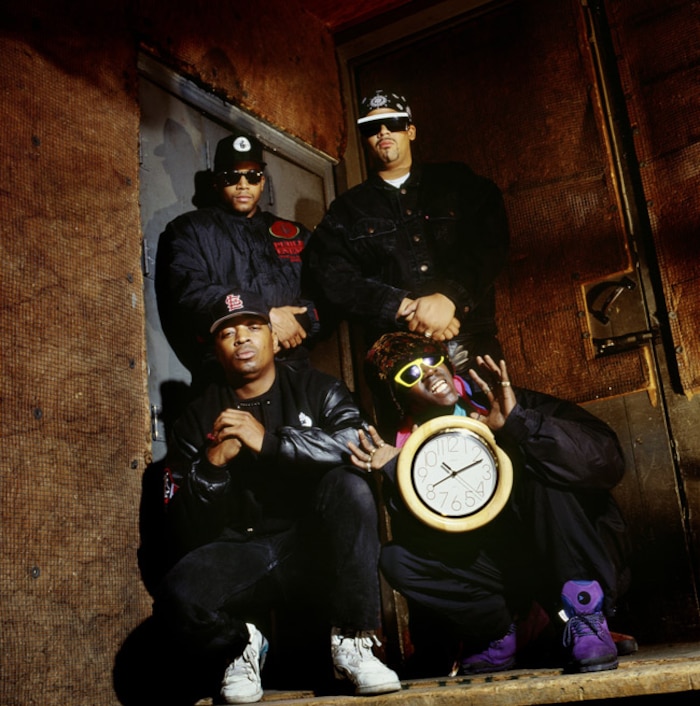
Leyla Turkkan
After the show, the photographers wanted photo ops. I was conflicted and the band was too. The photographers wanted Chuck, Flavor, Griff and some S1Ws in a cell. It was unappetizing after seeing what those poor inmates were like. It was a mockery. I remember the band not wanting to do it. Wanting to get out of there. We got it done as quickly as we could. The event finally wound down sometime after 4 pm. It was a long, hot day, everyone was exhausted, most of all PE who had to play Nassau Coliseum that same night.
Lindsey Williams
I think the mainstream press looked at the hip hop community in a different way after this event. I think much of the press was already taking hip hop seriously. But not only did they take it serious but they knew [after the show] that there was something important that hip hop had to say to the community.
Chuck D
Rikers isn’t something I talk about all the time because it was supposed to be the possible beginning of something that never happened. So I spoke in prisons and lectured but never [repeated] the performance aspect with Public Enemy. We hoped that we could go on and do bigger and better things, but the United States jail system and the government would not allow that. [It was] a little bit of optimism fucking leaving there.
A version of this article appeared in The Daily Note, a free daily newspaper distributed in New York during the 2013 Red Bull Music Academy.
